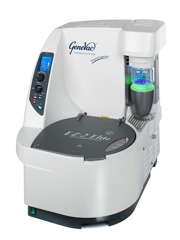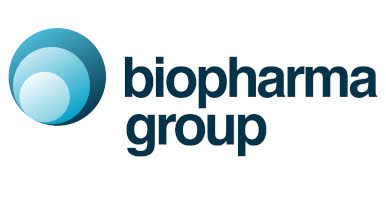High performance liquid chromatography (HPLC) is one of the most frequently used analytical separation techniques. A widespread and growing application for HPLC is for product purification following chemical synthesis. Centrifugal evaporation is an ideal technique for drying HPLC fractions as (with the right equipment) it can be both fast and controllable. There are, however, certain techniques to be aware of which can avoid problems and keep drying times down.
Don’t put up with bumping
‘Bumping’ is a familiar phenomenon to scientists involved in evaporation, resulting in product loss and cross-contamination. Solvent bumping is caused by a variety of factors and can be unpredictable. Usually it is with mixtures of solvents that the worst bumping occurs. However, bumping may be avoided by using a controlled vacuum ramp when initially pumping down, and increasing the centrifugal force to greater than 450G. Make sure you use the correct temperature/pressure settings for the solvents or solvent mixes involved.
Water/acetonitrile (ACN) or water/methanol mixes
A relatively large amount of heat is required to dry fractions, so when selecting a system choose one with plenty of available lamp power. The difference between available systems on the market is significant, so check actual run times before you invest. The system with the most 'capacity' (i.e. number of samples that can be loaded) may not be the system with the best 'throughput' of HPLC fractions.
Another issue frequently facing evaporation of water/ACN HPLC fractions is that some samples take significantly longer to dry than the rest. The usual cause of this is an interaction between the compounds involved and the solvent (water). To overcome this problem the secret to drying these ‘stubborn fractions’ is to follow the main run with a period at full vacuum. This will not cause freezing because by now the remaining water has a modified boiling point curve and cannot be made to boil as low as 0°C. This requires a system that can automatically change pressure at a pre-set time during the run.
Avoid overdrying without underdrying
Evaporation causes cooling, so during drying the sample temperature will be 'held down'. But when the samples reach dryness, the temperature of the samples will rapidly rise and compounds may be damaged. On many evaporators the only safe way to treat samples is to turn off the heat before any samples reach dryness. This is slow and open to human error, so make sure you specify a system that can monitor the sample temperature and shut off automatically.
Don’t be limited by the cold trap

EZ2 Elite evaporator
Finally, consider the job the system is doing, and look at the condenser (trap) capacity. If your system is running continuously then bear in mind that at some point all condensers need to be thawed out and drained after a certain interval, depending on total solvent load and trap capacity. Of course this would affect the overall throughput of HPLC fractions. The 'continuous' condenser design features two condensers in one, which alternate between working and defrosting, offering a novel solution to this problem.
Conclusion
Centrifugal evaporation represents an elegant technique to overcome the sample drying bottleneck in evaporating HPLC fractions in high throughput medicinal chemistry and product purification laboratories.
When drying HPLC fractions that often can be mixtures of Water/Acetonitrile:
- Ensure precautions are taken to prevent bumping
- Protect your samples from overheating
- Don’t confuse capacity with throughput – compare actual run times
- Use a multi-stage pressure approach to prevent freezing and optimise runtimes
- Don’t forget to factor in condenser defrost times into your planning.

